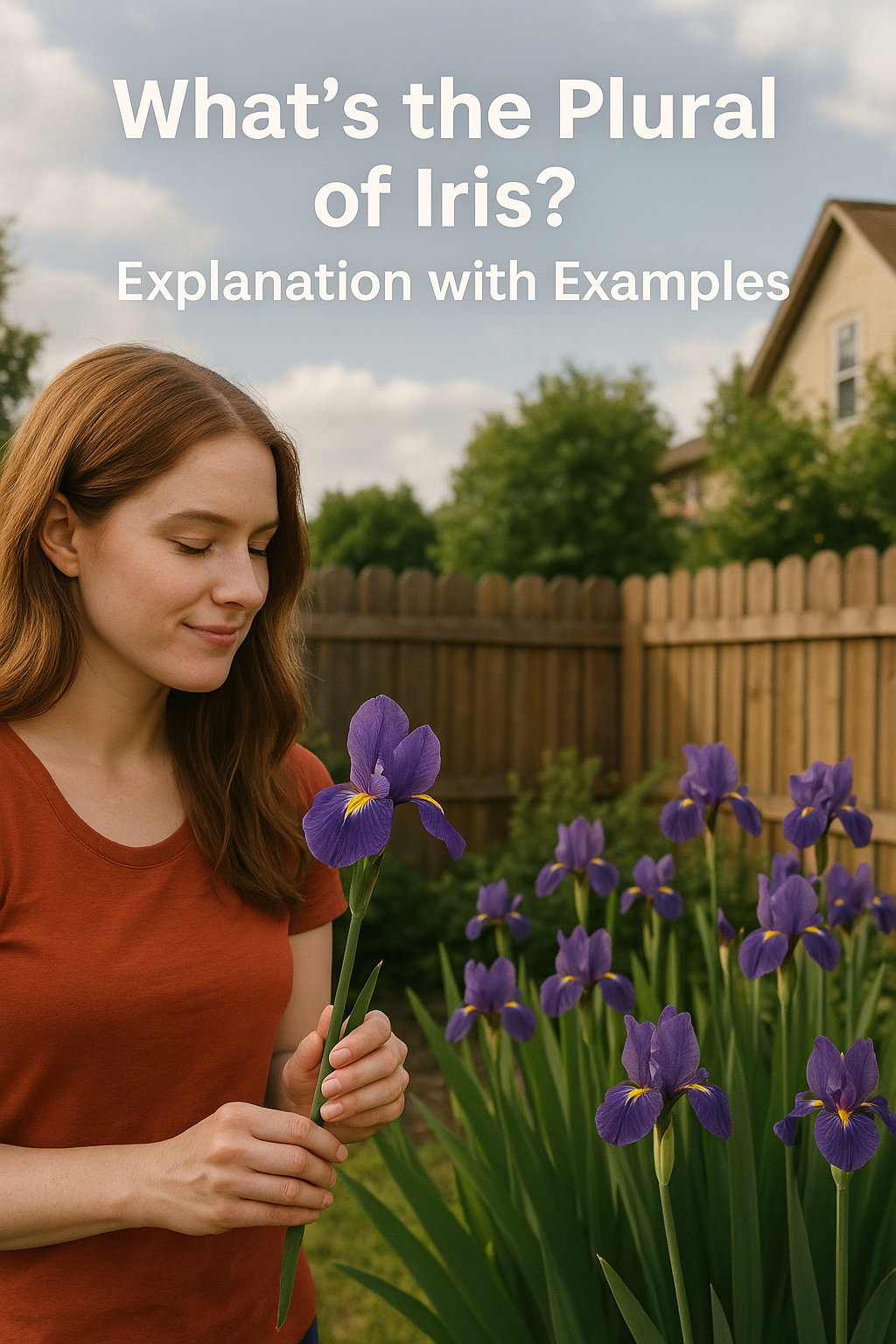Introduction
Have you ever wondered about the correct plural of iris? Whether you’re talking about colorful flowers in a garden or the eye structure that gives us our unique eye color, this word has multiple plural forms—but why?
Because of its origins, it has two plural forms: irises and irides. But when should you use each one? Let’s explore their differences, with examples, rules, and common misconceptions.
Understanding the Word “Iris”
The word “iris” comes from the Greek word iris, meaning rainbow. It refers to two distinct things:
- Botany: A flower genus known for its colorful flowers.
- Anatomy: The eye structure that controls pupil size and gives eyes their color.
This dual meaning is why “iris” has two different plural forms. Let’s break them down.
Read More About This Article: Heyday or Hayday – What Is the Right Word?
The Two Plural Forms of “Iris”
“Irises” – The Most Common Plural
The plural irises follows standard English pluralization rules by simply adding -es. This form is most commonly used when referring to flowers.
Examples:
- “The garden was filled with beautiful irises in shades of purple, yellow, and blue.”
- “She loves painting irises because of their intricate petal structure.”
- “Different species of the iris plural have unique characteristics.”
When to Use “Irises”
Use irises when referring to:
- The flower genus (Iris).
- Multiple colorful flowers of this type.
- General conversation, as it’s the more commonly accepted plural.
“Irides” – The Latin-Based Plural
“Irides” (pronounced eye-ri-deez) comes from Latin and is primarily used in scientific contexts when discussing eye structure.
Examples:
- “The irides of many animals have unique patterns, much like fingerprints.”
- “Scientists study irides to understand eye pigmentation disorders.”
- “Her hazel irides appeared golden in the sunlight.”
When to Use “Irides”
Use irides when referring to:
- The eye structure that controls the pupil.
- Scientific or medical discussions.
- Formal or technical writing about eye anatomy.
Comparing “Irises” and “Irides”
| Plural Form | Used For | Example Sentence |
|---|---|---|
| Irises | Flowers (Botanical) | “Her garden is full of irises in various shades.” |
| Irides | Eye Anatomy (Scientific) | “The irides of the cat changed color in different lighting.” |
Examples in Context
To fully understand how these words are used, let’s see them in different contexts:
Botanical Usage
- “Irises are among the most colorful flowers in spring gardens.”
- “The flower genus Iris includes over 300 species.”
- “She planted Dutch irises in her backyard.”
Anatomical Usage
- “His irides appeared to shift from green to blue under different lighting.”
- “Doctors study irides to better understand how melanin affects eye color.”
- “Heterochromia is a condition where a person has two differently colored irides.”
Common Mistakes and Misconceptions
Many people assume that “irises” is the only correct plural of iris, but that’s not true. Here are some common errors:
Mistake 1: Using “irides” for Flowers
❌ Incorrect: “The garden was full of irides.” ✔ Correct: “The garden was full of irises.”
Mistake 2: Using “irises” for Eyes in Scientific Contexts
❌ Incorrect: “The doctor examined my irises.” ✔ Correct: “The doctor examined my irides.”
Case Study: Usage in Literature and Science
Botanical Example: “Irises” in Poetry
Vincent van Gogh’s famous painting “Irises” (1889) showcases the beauty of these colorful flowers. Poets and artists often use the plural irises to describe their visual appeal.
Quote from a poem:
“Fields of irises sway in the golden sun, a sea of purple hues.”
Scientific Example: “Irides” in Medical Research
In scientific literature, “irides” is commonly found in ophthalmology studies. For example:
Research excerpt:
“The pigmentation of irides is determined by melanin concentration and light scattering effects.”
Final Thoughts: Which Plural Should You Use?
The correct plural of iris depends on context:
- Use irises for flowers.
- Use irides for eye structure.
Here’s a simple rule:
If you can replace “iris” with “flower,” use “irises.” If you can replace it with “eye part,” use “irides.”
Understanding these distinctions will make your writing more precise and scientifically accurate.
FAQs
Can “iris” be singular for both meanings?
Yes, “iris” is the singular form for both flowers and eye structure.
Is “irides” acceptable in casual speech?
Not really. “Irides” is mainly used in formal or scientific contexts.
Why does English borrow Latin plural forms?
English has borrowed many words from Latin and Greek, especially in science and medicine, which is why we have forms like irides.
By understanding the difference between irises and irides, you can use the correct plural of iris confidently. Whether you’re admiring colorful flowers or discussing eye structure, you now know which word to use.
Let us know—do you have a favorite type of irises in your garden? 🌸
